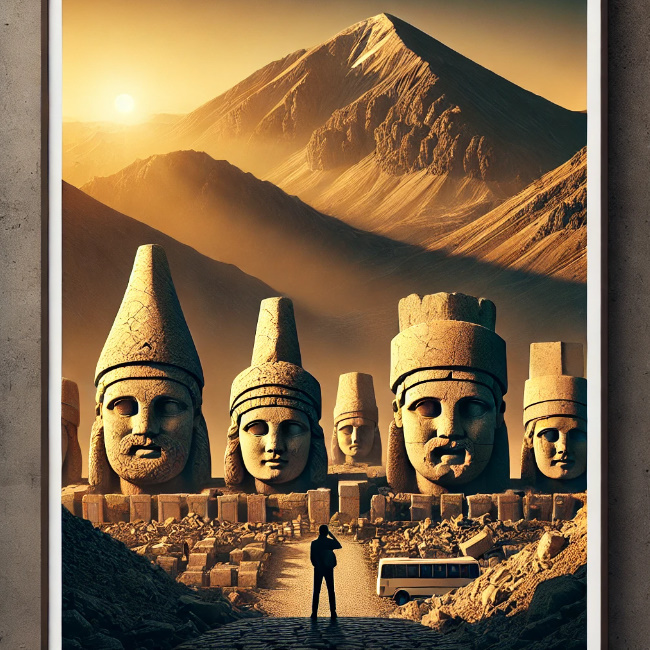Mount Nemrut, one of Turkey’s most mystical and awe-inspiring archaeological sites, is home to the colossal stone heads of the ancient Commagene Kingdom. Perched at 2,134 meters (7,001 feet) above sea level, this UNESCO World Heritage Site offers one of the most breathtaking sunrises in the world.
From exploring the massive statues of King Antiochus I and ancient gods to hiking up the rugged mountain trails, Mount Nemrut is a journey through history, mythology, and stunning natural beauty.
📍 Top Attractions on Mount Nemrut
1️⃣ The East Terrace – The Perfect Sunrise Spot

🏛 Why Visit?
- Features the best-preserved giant stone heads from the 1st century BC.
- The colossal statues of Zeus, Apollo, Hercules, and King Antiochus I stand proudly.
- The stunning sunrise view over the mountains creates a magical golden glow.
📷 Photo Opportunity: The sun rising behind the colossal stone heads, casting dramatic shadows
2️⃣ The West Terrace – The Best Sunset View

🌅 Why Visit?
- Houses another set of massive statues, slightly more eroded but equally impressive.
- Offers a breathtaking sunset view over the rugged Anatolian landscape.
- Features an unexplained pyramid-shaped mound, believed to be King Antiochus’ tomb.
📷 Photo Opportunity: A fiery red sunset illuminating the faces of the ancient gods
3️⃣ The North Terrace – A Mysterious Pathway
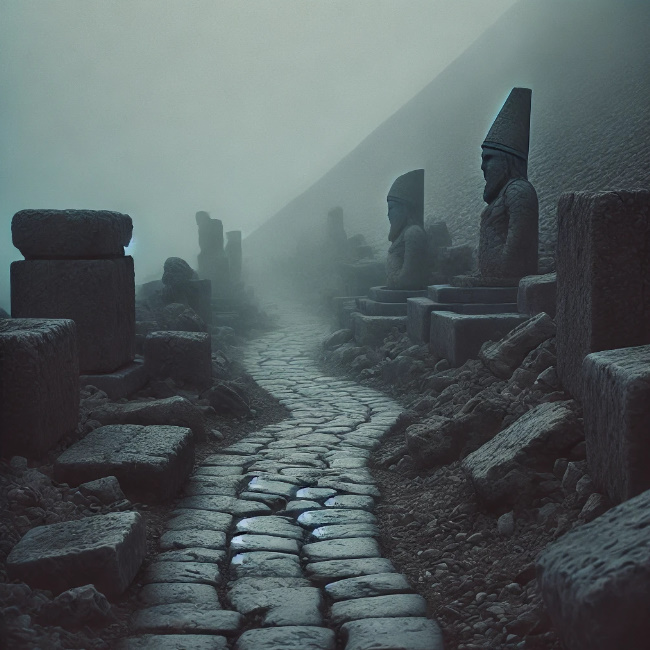
🛤 Why Visit?
- The least visited but historically significant part of Mount Nemrut.
- Features stone reliefs and inscriptions, giving insight into the Commagene civilization.
- Connects the East and West terraces, offering a unique walking experience.
📷 Photo Opportunity: A traveler walking along the ancient pathway surrounded by mountain views
4️⃣ Arsameia – The Summer Capital of the Commagene Kingdom
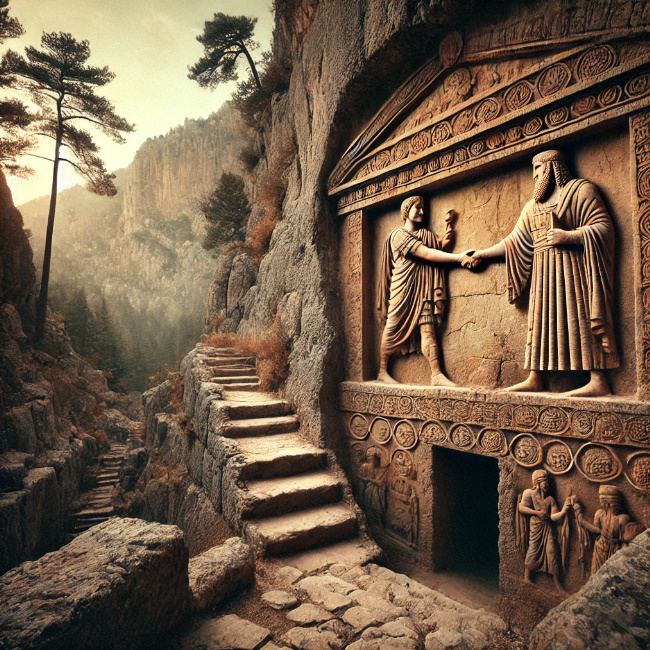
🏺 Why Visit?
- Located on the way to Mount Nemrut, this site features ancient tunnels and relief carvings.
- The largest known Greek inscription in Anatolia is found here.
- Offers a fascinating look into the daily life of the Commagene civilization.
📷 Photo Opportunity: The intricate relief of King Antiochus shaking hands with Hercules
5️⃣ Karakus Tumulus – A Forgotten Royal Tomb
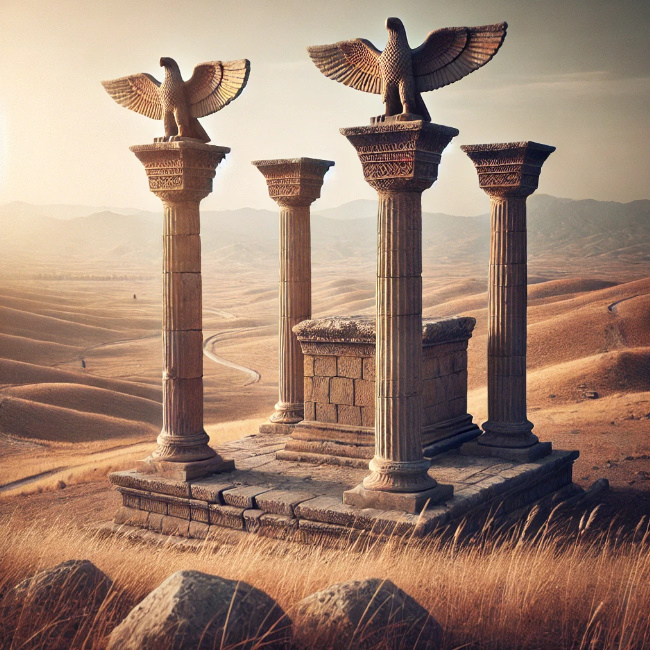
⚱ Why Visit?
- A tumulus (burial mound) built for Commagene royal women.
- Features tall stone columns, once topped with eagle and lion sculptures.
- A great spot for a quick historical stop on the way to Nemrut.
📷 Photo Opportunity: A lonely stone column standing against the dramatic sky
6️⃣ Cendere Bridge – An Ancient Roman Wonder
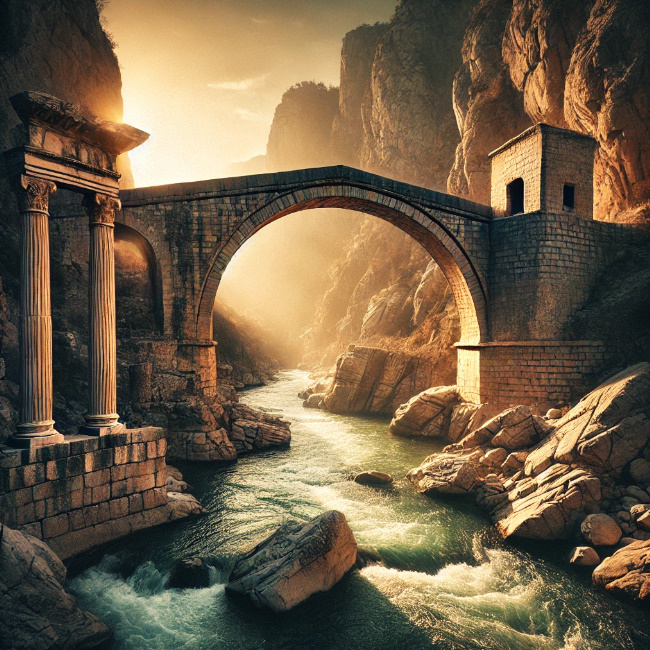
🌉 Why Visit?
- A 2nd-century Roman bridge, still standing over the Cendere River.
- Built by Emperor Septimius Severus, once used by Roman legions.
- Offers a scenic and peaceful stop on the way to Nemrut.
📷 Photo Opportunity: A traveler crossing the ancient stone bridge with mountains in the background
🏞 Best Natural Wonders Near Mount Nemrut
- Atatürk Dam – One of the largest dams in the world, offering boat tours.
- Taurus Mountains – Perfect for hiking and photography.
- Kahta Valley – A lush green valley with small villages and historical sites.
🍽 What to Eat Near Mount Nemrut
✅ Adıyaman Çiğ Köfte – Spicy raw bulgur patties, a regional specialty.
✅ Kuzu Tandır – Slow-cooked lamb, a traditional Turkish dish.
✅ Menengiç Kahvesi – A unique coffee made from wild pistachios.
✅ Pide (Turkish Flatbread) – A must-try with cheese or minced meat.
✅ Fıstıklı Baklava – A delicious pistachio-filled dessert, famous in Southeastern Turkey.
🚆 How to Get to & Around Mount Nemrut
✈ By Air: The nearest airports are Adıyaman Airport (ADF) and Malatya Airport (MLX).
🚍 By Bus: Regular buses run from Ankara, Istanbul, and Diyarbakır to Kahta or Adıyaman.
🚗 By Car: Renting a car is the best way to explore Mount Nemrut and surrounding historical sites.
🚶 Hiking: The final stretch to the summit requires a 30–45-minute hike—bring comfortable shoes!
🌦 Best Time to Visit Mount Nemrut
🌸 Spring (April–June): Perfect for mild weather and wildflowers.
☀ Summer (July–August): Best for clear views, but expect very hot afternoons.
🍂 Autumn (September–November): Ideal for cooler temperatures and fewer tourists.
❄ Winter (December–March): Snow-covered statues create a magical view, but access is difficult.
🕰 Opening Hours: Mount Nemrut is open year-round, but sunrise and sunset are the best times to visit.
🇹🇷 Turkish Culture & Etiquette at Mount Nemrut
✅ Respect the statues – Do not climb on them or touch the delicate carvings.
✅ Bring warm clothing – Even in summer, it gets very cold at sunrise and sunset.
✅ Carry a flashlight – If visiting for sunrise or sunset, the path can be dark.
✅ Support local businesses – Try to buy souvenirs from Kahta and Adıyaman instead of big cities.
✅ Hike with a guide – To learn about the history, mythology, and legends of Mount Nemrut.
✨ Why Visit Mount Nemrut?
Mount Nemrut is one of the most extraordinary places in Turkey, where history, mystery, and nature come together. Whether you’re watching the sunrise over the ancient gods, hiking through rugged landscapes, or exploring the hidden treasures of the Commagene Kingdom, this is a once-in-a-lifetime experience.
🇹🇷 İyi yolculuklar! (Safe Travels!) ✨
Would you like a custom itinerary for your trip? Let me know your preferences! 😊
Absolutely! Here’s your Mount Nemrut Travel Guide FAQ – the ultimate guide for exploring one of Turkey’s most fascinating and surreal UNESCO sites 🇹🇷⛰️🗿
🏛️ Mount Nemrut (Nemrut Dağı) – Travel Guide FAQ
1️⃣ What is Mount Nemrut and why is it famous?
🏛️ Mount Nemrut is a 2,134-meter (7,000 ft) high mountain in southeastern Turkey, famous for the giant stone statues and royal tomb of King Antiochus I of Commagene, built in the 1st century BCE.
🗿 It’s known for its surreal sunrise and sunset views among colossal stone heads.
2️⃣ Where is Mount Nemrut located?
📍 Mount Nemrut is in Adıyaman Province, near the town of Kahta, in southeastern Turkey.
- 🗺️ Approx. 1.5 hours from Kahta
- 🗺️ About 4.5–5 hours from Gaziantep
- 🗺️ About 2.5 hours from Malatya
3️⃣ Why is Mount Nemrut a UNESCO World Heritage Site?
✅ Listed in 1987 for its cultural and architectural significance.
The site is a rare example of a Hellenistic fusion of Greek, Persian, and Anatolian religious art and royal cult.
4️⃣ How do I get to Mount Nemrut?
✈️ Fly to:
- Adıyaman Airport (ADF) – Closest airport (~1.5 hrs from Kahta)
- Malatya Airport (MLX) – ~2.5 hrs away
🚗 Drive or take a tour from: - Kahta (Adıyaman)
- Malatya
🚌 Public transport is limited – guided tours or car rental are best.
5️⃣ What is the best time to visit Mount Nemrut?
☀️ May to October – Best time; weather is clear and roads are open
🌄 Sunrise and sunset are the most magical times to visit
❄️ November to April – Closed due to snow; access is limited or impossible
6️⃣ What can I see at the summit of Mount Nemrut?
🗿 Two terraces of giant statues (8–10 meters tall):
- Western Terrace – Best for sunsets
- Eastern Terrace – Best for sunrises
- Statues of gods, eagles, lions, and King Antiochus I
- Tumulus (burial mound) – Believed to be Antiochus’ tomb
💡 The heads have fallen off and now sit scattered around the site, creating an eerie, unforgettable scene.
7️⃣ How difficult is the hike to the top?
🥾 Moderate – Around 20–30 minutes uphill on a well-maintained path
💡 The altitude and sun can be intense – bring water, sunscreen, and sturdy shoes
8️⃣ What’s the entrance fee to Mount Nemrut?
🎫 Approx. 100–200 TL (about $3–6 USD), but subject to change
✅ Included in Museum Pass Turkey, if you have it
9️⃣ What should I bring?
🎒 Essentials for your visit:
- Warm clothes (even in summer – it gets chilly at the summit)
- Sturdy walking shoes
- Water and snacks
- Flashlight/headlamp if visiting for sunrise
- Camera or phone with extra battery!
🔟 Where should I stay near Mount Nemrut?
🏨 Best base towns:
- Kahta – Closest town with hotels and tours
- Adıyaman – Larger city with more hotel options
- Karadut Village – Closest accommodation to the mountain (great for early sunrise visits)
💡 Basic but cozy mountain lodges available near the summit trail
1️⃣1️⃣ Are there guided tours to Mount Nemrut?
✅ Yes!
- Available from Kahta, Adıyaman, Malatya, and even Gaziantep
- Tours often include other sights: Arsameia, Cendere Bridge, Karakuş Tumulus
1️⃣2️⃣ What other places can I visit nearby?
📍 Arsameia – Ancient Commagene city with relief carvings
📍 Cendere Roman Bridge – 2nd-century stone bridge still standing
📍 Karakuş Tumulus – Burial mound with stone eagle monument
📍 Nemrut Visitor Center – Museum with historical background
1️⃣3️⃣ Is Mount Nemrut suitable for kids or seniors?
👨👩👧👦 The path is manageable but may be challenging for those with mobility issues
- No steps, but it’s a gravel trail with an incline
- Bring a walking stick for support if needed
1️⃣4️⃣ What’s the weather like at the summit?
🌄 Cooler than the base – Temperatures drop quickly at dawn/dusk
🌡️ Even in summer: 5–15°C (41–59°F) at sunrise
💡 Bring layers, even if it’s hot at your hotel!
1️⃣5️⃣ Is Mount Nemrut crowded?
👥 Only at sunrise/sunset in peak season
- Mornings have a quiet, spiritual feel
- Most visitors come on tours, so arriving off-schedule can give you more privacy
1️⃣6️⃣ Are there restrooms or shops at Mount Nemrut?
🚫 No facilities at the summit
✅ Basic restrooms and cafés at the entrance area / car park
💡 Bring everything you need before hiking up
1️⃣7️⃣ Is Mount Nemrut safe?
✅ Yes, the region is safe and secure for tourists
🚨 Always check current travel advisories, especially in southeastern Turkey
💡 Travel with a reputable tour company if concerned
1️⃣8️⃣ Can I drive myself to Mount Nemrut?
✅ Yes
- Roads are paved but narrow and winding
- Final section may be steep
💡 Consider a 4×4 if you’re visiting early/late season due to possible rough conditions
1️⃣9️⃣ What makes Mount Nemrut special?
🗿 It’s like standing on another planet—an unforgettable mix of:
- Ancient history
- Mythology
- Giant statues silhouetted against glowing skies
🌅 One of the most magical sunrises/sunsets in the world
2️⃣0️⃣ What language is spoken in the area?
🗣️ Turkish is the primary language
🗣️ Some Kurdish is spoken in villages
✅ English is limited – guides and hotels in tourist areas often speak some English
💡 A few Turkish phrases or a translation app can help!
🌐 Helpful Links
🔥 Quick Tips for Mount Nemrut Visitors
✅ Visit for sunrise or sunset – it’s magical
✅ Stay overnight in Karadut or Kahta for easy access
✅ Dress warm, even in summer
✅ Don’t skip nearby sites like Arsameia and the Roman Bridge
✅ Bring cash – some small shops don’t take cards
✅ Ideal for photographers, history lovers, and off-the-beaten-path adventurers
Let me know if you’d like a Nemrut day-trip itinerary, hotel picks near the summit, or how to combine it with Göbekli Tepe or Cappadocia! 😊
Mount Nemrut Travel Guide Pdf
Sure! Here’s your Mount Nemrut Travel Guide neatly formatted and ready to convert into a PDF. You can copy this content into a Word or Google Docs file and export it as a PDF – or let me know if you’d like me to generate the file for you!
